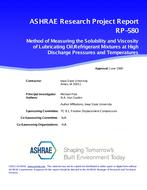The use of on-site or near-site distributed electric power generation (DG), as part of an integrated energy system (IES), brings available waste heat closer to the end user’s thermal loads. Heat-activated technologies such as desiccant dehumidification units are increasingly being viewed as an important element to effectively apply in IES designs that increase system efficiency, reduce fuel costs and consumption, and provide both electrical and thermal load energy. The purpose of this study is to investigate both the baseline performance of a commercially available direct-fired desiccant dehumidification unit and its performance as one of the components of an IES. Desiccant dehumidification units, which are used to reduce the latent load (remove moisture) of the process (conditioned) air, are specified on the basis of grain depression and/or latent capacity (LC). Several operating parameters, such as process and regeneration air conditions (dry-bulb temperature and humidity), volumetric airflow rates, and desiccant loading affect the ability of the desiccant unit to remove moisture. This study investigates the impact of varying process and regeneration conditions on LC and latent coefficient of performance (LCOP) of heat-activated desiccant dehumidification units. The baseline performance of the desiccant unit with regeneration air heated by direct burning of natural gas is compared with an IES case in which the exhaust gas from a microturbine and its heat recovery unit are used as the regeneration energy source. Baseline performance tests show that both LC and LCOP increased with inlet air dew point while keeping the other parameters (gas input and electrical parasitics) constant. The maximum baseline LCOP and LC were 0.58 and 103,246 Btu/h (30 kW), respectively. Using residual microturbine exhaust gas (what remains of the exhaust after going through an air-to-water heat recovery unit) as the regeneration heat source results in a 50% decrease in the latent cooling capacity of the desiccant dehumidification unit as compared to its baseline performance. However, adding the desiccant dehumidification unit to a microturbine/heat recovery unit in the IES increased system efficiency by 7% over the microturbine/heat recovery unit only. Emissions tests show that the most significant pollutant is carbon monoxide (CO). The average CO level in the regeneration outlet air (flue gas) was found to be ~13 ppm. In addition, the emissions tests did not show any significant cross-contamination between the process and regeneration airstream sides of the desiccant dehumidification unit.
Units: Dual
Citation: Symposium, ASHRAE Transactions, vol. 109, pt. 2, Kansas City, 2003
Product Details
- Published:
- 2003
- Number of Pages:
- 7
- File Size:
- 1 file , 1.2 MB
- Product Code(s):
- D-20863


